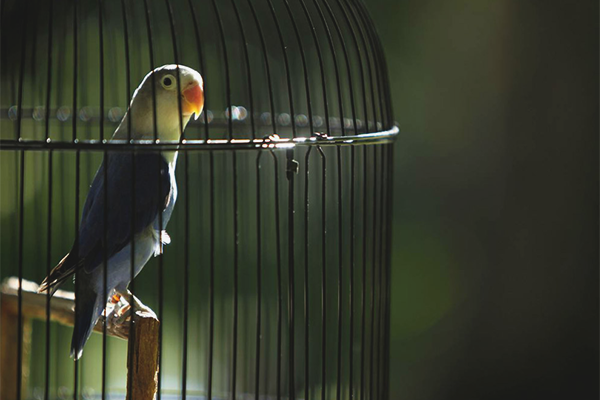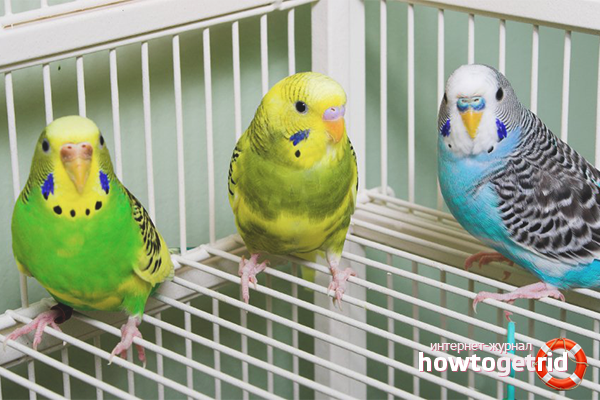The content of the article
It is not a secret to anyone that the parrots should stretch their wings from time to time and fly freely inside the enclosed space, be it a house or an apartment. In both cases, of course, all windows, doors and any other through openings leading to the street should be closed in advance. It is necessary for the bird to fly as often as possible in order to prevent the development of any diseases and processes leading to the atrophy of the wings.
Since parrots love to stop at the very top of the room, for example, a closet, each owner must know how to drive a parrot into a cage. Moreover, it is necessary to make a reservation in advance: forcibly forcing the bird to return to capture is extremely not recommended, since it will remember this experience as negative and will experience distruston the next flight. An important role is played by the temperament of the parrot, as some breeds are especially vindictive.
For example, Corellas are able to remember for a long time any negative experience of communicating with their master; it is clear that this entails a loss of mutual understanding, and the pet will simply avoid any next contact.
Bird confidence in the host
Before you start releasing a parrot from a cage, you should tame it; he must trust his master completely and go to the call without any hesitation. Usually a bird is considered tamed when it willingly takes food from its hand, sits on a finger or hand and allows itself to be stroked for a long time. If she is still afraid of direct contact, then with the flight should be a little wait.
Ideally, you do not need to drive the parrot directly into the cage, since the process of returning it back should proceed as follows:
- the owner simply calls by the name of his pet;
- he responds, flies up to the hand, sits on a finger or a brush;
- he flies to his home, being brought up to the door.
Obviously, this is achieved only with the full confidence and understanding between the owner and the parrot.
Luring with the help of treats and toys
At first, when the bird only felt the beauty of free flight, it is possible to invite her back not only with the help of repeated repetition of her name, but also using her favorite delicacy, of course, in small quantities. Part of it should be put on hand, part - inside the cage, so that the parrot saw the meaning of returning to the cage.
Sometimes a bird can be frightened by something, and even a delicacy will no longer help to lure it from a secluded corner of an apartment. In this case, you need to act somewhat differently:
First, you can simply leave the parrot alone and not touch it for a certain amount of time, let it sit where it liked and where it feels safe. After 20-30 minutes, the bird will calm down and fly again on hand.
Secondly, it is possible to entice the pet back in a somewhat non-standard way, carefully bringing your favorite perch to it: it will see an element of familiar peace and well-being and will want to return to a safer place where it is protected and provided with food and water.
It is no secret that all parrots love their toys, which they especially cherish; usually these are bells, small mirrors or even soft toys.Therefore, to return the bird to the cage and with their help, in any way letting her know about their immediate proximity. So, the sound of a bell will remind a parrot about how well and comfortably to sit on a perch and play with him, and he will gladly agree to sit on his hand.
Quick pet cage return
If all of these methods did not have any effect, and the bird is still sitting in its place, is not given in hand and sings songs, then you will have to resort to manual fishing as an emergency way to return to the cage. But here you can cheat a little, so as not to harm the friendly feelings of the pet. It was noted above that some birds are especially vindictive and are capable of harboring a grudge for a sufficiently long period, therefore it is necessary, first, to remove all suspicions from themselves, namely, to make sure that the parrot simply does not recognize the smell of the host second, completely darken the room.
It is necessary to act, relying on the element of surprise: some breeds see well in the dark, but at the same time they need a little time for adaptation, and this should be used.
To the parrot did not feel the familiar smell, you can wear rubber or cotton gloves on your hands, which have a sharp own. It is advisable to use as thick as possible, since the bird will most likely bite, resisting the “creature” unfamiliar in the dark. If the parrot bites through thin gloves, it will instantly smell the smell of the host and suspect that something is wrong.
You can approach the feathered pet with your mobile phone, carefully shining them around the place where the bird is sitting, so as not to blind her. The parrot should be carefully but surely taken from the side of the wings so that it does not fly out of the hands, and then quickly put inside the cage. After he realized where he was, you should wait a little longer in order to completely withdraw all suspicions from yourself and go into the room to turn on the light. So, the bird, being a little agitated, simply did not realize what had happened at all in the last minutes, plus, it would definitely not take offense at its owner. It is important to act carefully, but at the same time quickly and confidently, this is the key to safely returning the parrot back.
Another simple tip is that before walking the pet, you should remove all the feeders from the cage in about an hour and a half, so that the bird may get a little hungry. Having flown a bit, she will surely get hungry and instinctively come back, expecting from her master her favorite grains and fruits. You can put food on a saucer on the bottom of the cage: the parrot will see a treat in the cage and will decide to fly into it.
How not to return the feathered pet to the cage
It is also not recommended to catch a parrot with hands in daylight: he will surely remember this unpleasant experience. If there is no possibility to darken the room, and it is necessary to return the pet back as soon as possible, some use a special net, which the bird is not able to bite through. This method is not recommended to resort at all, as there is a possibility of damage to the wings and the nervous system of the bird.
It should be remembered that in order for a parrot to always want to go back, you just need to provide it in a cage with delicious food, enough water, various delicacies and not take your favorite toys. Over time, the bird will understand that even to fly through the rooms and fine, returning to the cage is also necessary.
Video: how to return a wavy parrot to the cage












To send
Hello, my dog has mastitis, than to drink it at night, tomorrow I will take veterinarian ?????? Thank you, happy new year, everyone, everyone and our animals HEALTH !!!!!!!!!